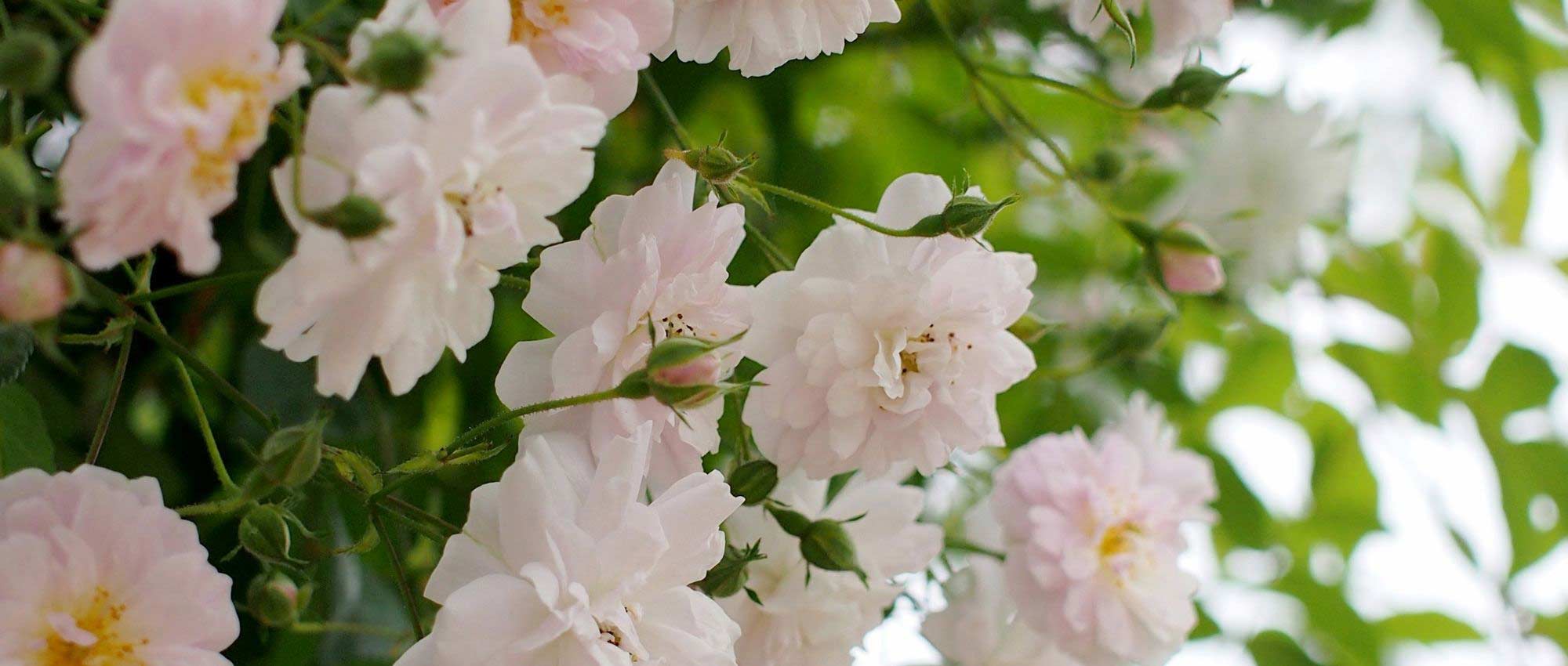
Climbing rose or liana rose: what's the difference?
Discover how to make the right choice!
Contents
Climbing roses and lianas are roses that have woody climbing stems and can be trained onto supports. Like other roses, climbing varieties are very romantic and fit beautifully into English gardens. They offer delicate, often scented flowers, which can be solitary or gathered in clusters. Unlike many other climbers, these roses do not have voluble stems, tendrils, suction cups or climbing roots, but cling by their thorns. They are perfect for climbing on pergolas, arbours, arches, against walls, even into trees!
However, climbing roses and liana roses are two categories that can cause confusion. Discover what sets them apart, their respective characteristics and which to choose depending on garden use.
What is the difference between a climbing rose and a liana rose?
Climbing roses are more delicate and more modest in size, reaching up to 3.50 m in height. They are better suited to a small gazebo, an arch or a trellis. Most of them are perpetual, capable of reflowering. Their flowers are generally large and can be solitary, isolated or in small clusters. Climbing roses create a very romantic effect!
Liana roses are much more vigorous. They can climb into trees, cover a large pergola or any other imposing support. They can climb very high, sometimes reaching more than 10 m in height. They grow quickly and can cover a large area in little time. They send out long, flexible woody climbing stems and quickly attain significant size. Moreover, flowering of liana roses is impressive. They produce a large number of flowers, gathered in clusters. In general, they are not perpetual, flowering only once a year (in spring or summer).
| Height | Perpetual? | Flowers | |
| Climbing rose | Up to 3.50 m | Yes | Large, solitary or in small groups |
| Liana rose | Sometimes over 10 m | No | Abundant flowering, in large clusters of small flowers |
Once established, the climbing rose needs more maintenance: it requires regular pruning, unlike the liana rose, which can more easily be left to its own devices, without intervention. However, the latter can cause overcrowding and invade other plants; in some cases intervention will be necessary to keep it in check.
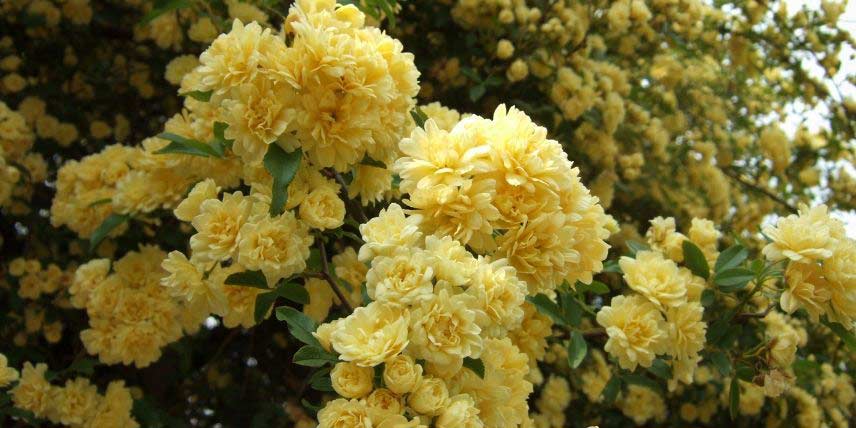
Liana rose Rosa banksiae var. lutea (photo Midori)
Which one to choose based on your use?
For a romantic effect on a small arbour or against a wall, choose a climbing rose. They are delicate, easier to manage, less invasive and lighter for the support. They can more easily be paired with other plants, such as clematis, or with perennials in a border, without risking smothering them.
Liana roses, on the other hand, are perfect for hiding a wall or covering a large pergola, etc. Choose them if you have lots of space, a large garden or a big area to cover. You will need to choose a large, sturdy support capable of bearing their weight. They also allow quick and effective concealment of an unsightly wall, shed or structure. Liana roses can also be used to cover a bank.
In summary:
| Climbing rose | Liana rose | |
| To climb a tree | X | |
| On a pergola | X | X |
| On a trellis against a wall | X | |
| On a small arch or tonnelle | X | |
| To hide an unsightly wall or structure (shed, building…) | X | |
| As groundcover on a bank | X |
This table provides general guidance. In practice, everything depends on size of your support and effect you want to achieve!
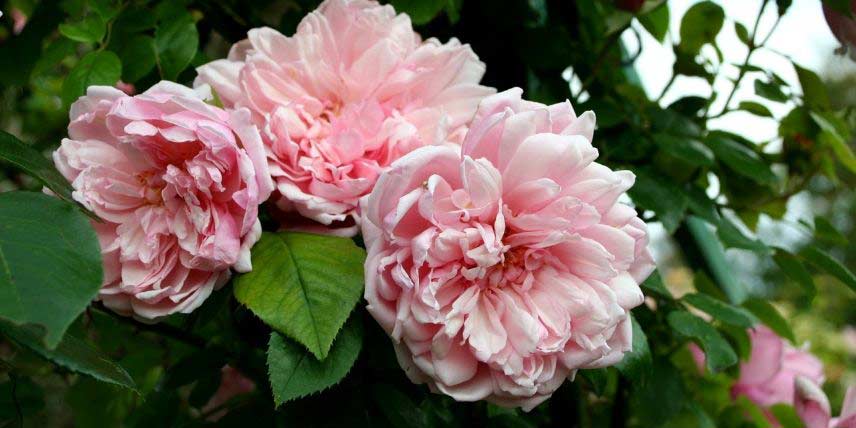
Climbing rose ‘Albertine’ (photo Spedona)
Discover other Climbing Roses
View all →Available in 2 sizes
Available in 1 sizes
Available in 4 sizes
Available in 2 sizes
Available in 3 sizes
Available in 2 sizes
Available in 3 sizes
Available in 2 sizes
Some examples of climbing roses
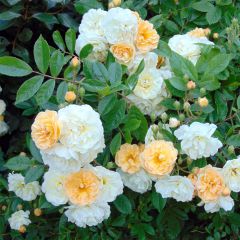
Rosa Ghislaine de Féligonde - Climbing Rose
- Flowering time July to November
- Height at maturity 3 m
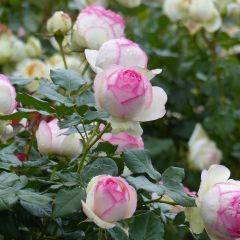
Rosa Pierre de Ronsard - Climbing Rose
- Flowering time July to November
- Height at maturity 2 m
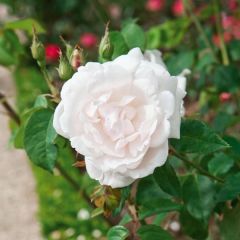
Rosa x Noisette 'Madame Alfred Carrière'
- Flowering time July to November
- Height at maturity 4 m
Some examples of liana roses
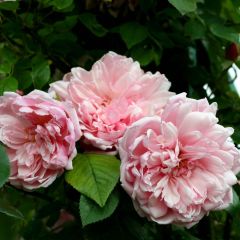
Rosa x wichuraiana 'Albertine' - Rambling Rose
- Flowering time June to August
- Height at maturity 6 m
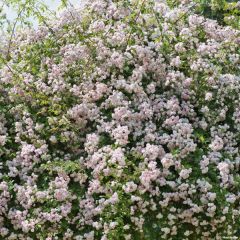
Rosa x moschata 'Paul's Himalayan Musk' - Rambling Rose
- Flowering time July, August
- Height at maturity 8 m
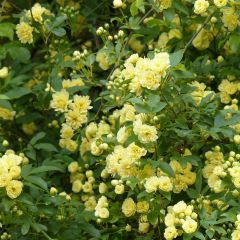
Rosa banksiae 'Lutea' - Rambling Rose
- Flowering time May to July
- Height at maturity 12 m
To learn more
- Discover all our tips to successfully grow climbing roses in pots.
- Subscribe!
- Contents
































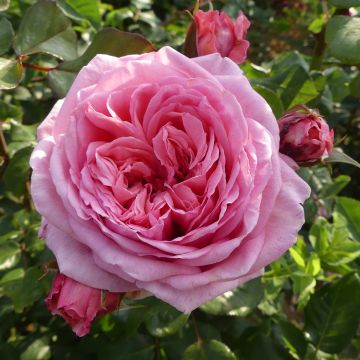
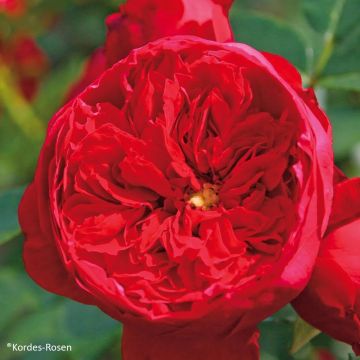

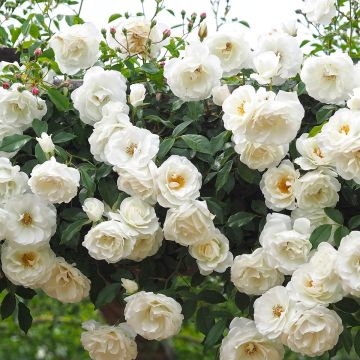
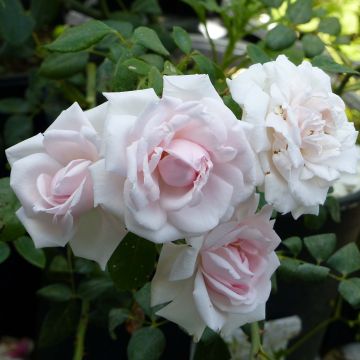
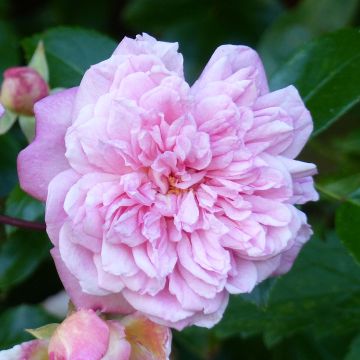
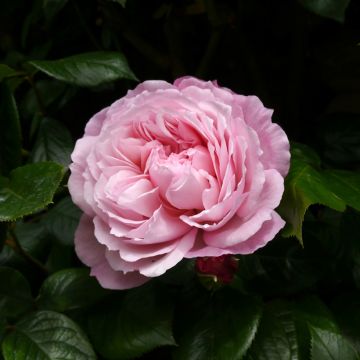
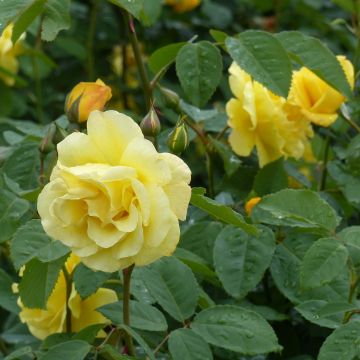

Comments